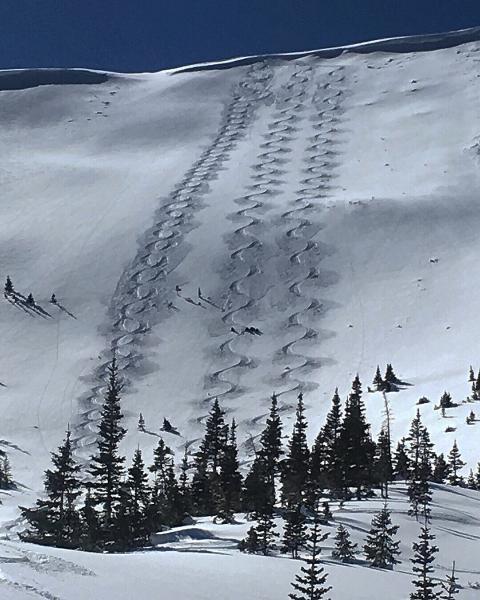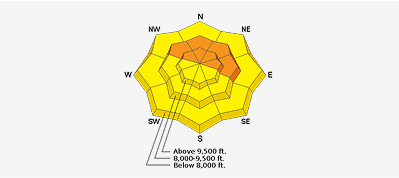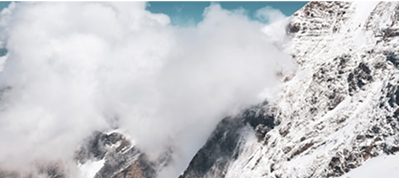Went to have a look at South Monitor yesterday, went back to ski it today. Did a little experiment with spatial variations today, I was curious about the change in snow-pack structure within the confines of one slope. After probing the top portion of N facing South Monitor it was apparent that it had slid recently leaving a hard bed surface under the last storm or two's new snow, this lasted down to the mid-slope rollover which is close to 40 degrees. On the roll-over the snow is thin with a obvious layer of loose facets down at the bottom, in some spots it's shallow enough to hit rocks if you turn too aggressively, down below the roll-over close to where it flattens out there is old debris under last weeks new snow. I felt fine about skiing it today but with a new load on the way I would be suspect of a new snow slide steeping down on the roll-over, or a skier triggering the slope halfway down the slope when they thought they were good to go. The point of this is that things are complicated this year and just because part of a slope seems stable doesn't mean the whole slope is and spatial variability should be taken into account on avalanche prone slopes, especially this year with our poor snow-pack structure.
Photos: a photo of the slope I was looking at, with large differences in the snow-pack structure from the top starting zone, which wasn't bad to the roll-over which wasn't all that good.







